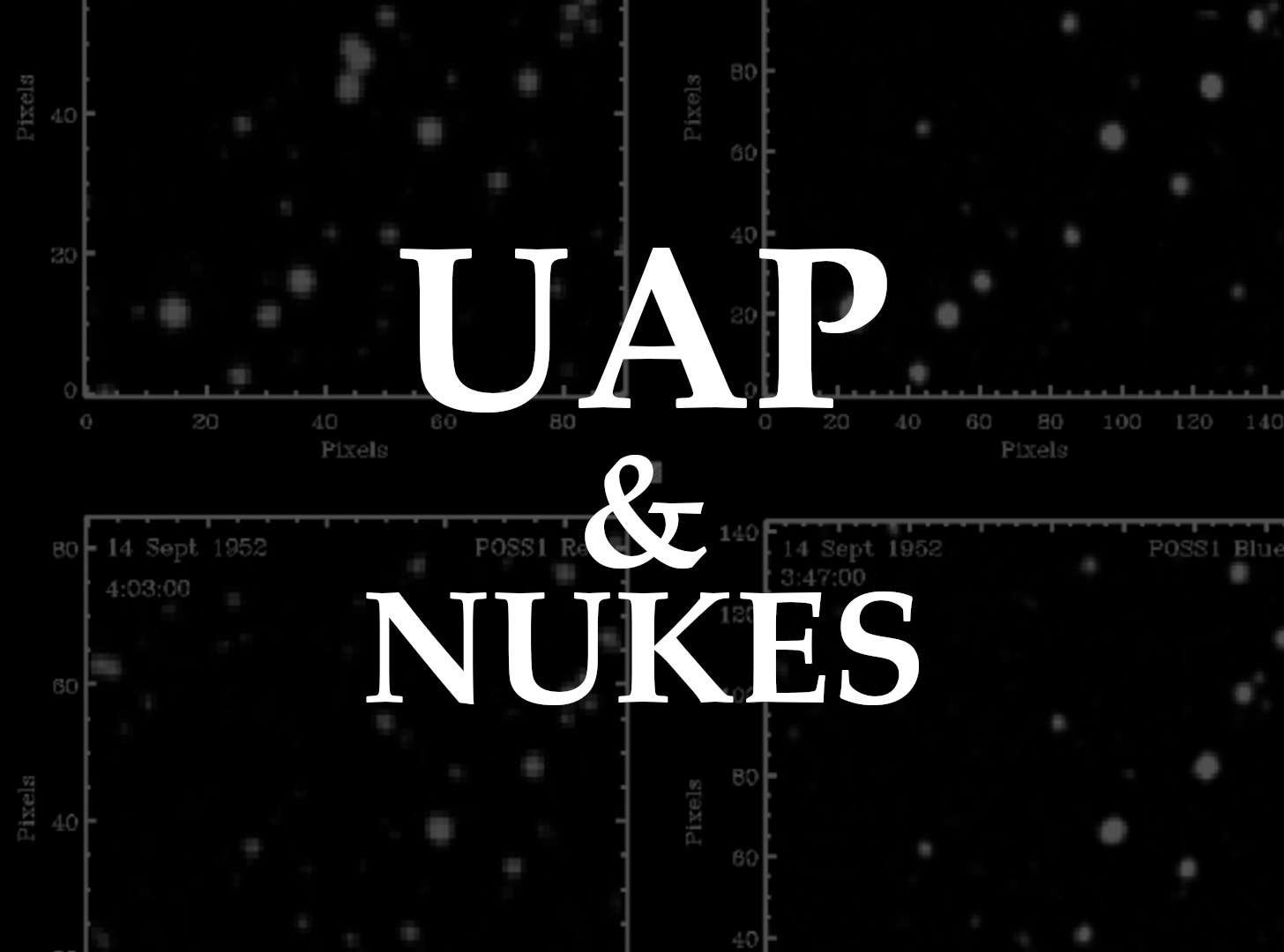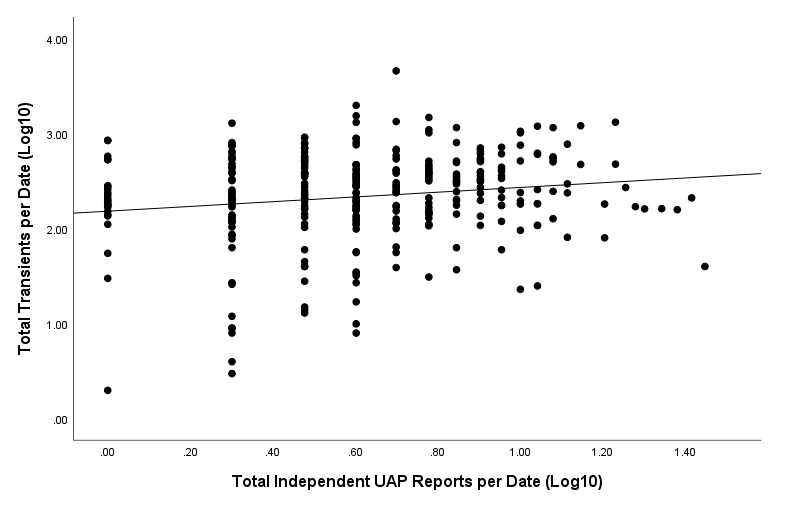New study has found a possible link between UAP and nuclear tests
In a new pre-print paper using data from both VASCO and POSS-I, Drs. Stephen Bruehl and Beatriz Villarroel found several thousands of unknown transients that could be correlated to nuclear tests.

In a long-awaited paper, which is now available as a preprint on Research Square, the authors present new evidence in support of their hypothesis about the presence of unknown objects in Earth's orbit.
To test this, they used the Palomar Observatory Sky Survey (POSS-I) and examined two astronomical photographic plates of the sky taken at different times, using the VASCO project — a citizen science endeavour in which volunteers were asked to check for differences between them.
To prevent misidentification, they only used data predating the launch of the first man-made satellite in 1957.
Results revealed significant (p = .008) associations between nuclear testing and observed transients, with transients 45% more likely on dates within +/- 1 day of nuclear testing.
From an initial count of 107 875 transients detected between 1949 and 1957, authors noted that:
Of the 2,718 days in this period, transients were observed on 310 days (11.4%). In the overall sample, the number of transients per date ranged from 0 to 4,528 (across multiple locations on multiple plates), with 5% trimmed mean = 10.09 and median = 0.0
As several observatories could register the same alleged object in the same position as the Earth rotates, or the same alleged object moving around the Earth and temporarily halting, increasing the number of transients from one source, the figure of 4528 cannot be interpreted as the number of objects in space at one time. Nevertheless, the fact that a minimum of 0 was detected shows that there is a distinct phenomenon.
Four exposures of the 3 ×3 arcmin region of sky centered on the triple transient identified in July 1952. Upper left: The POSS I red image on July 19, 1952 at 8:52 (UT) containing the triple transient just above center. Upper right: A 10 m exposure POSS I blue image of the same region taken immediately afterward with no evidence of the triple transient. Lower left and right: POSS I red (left) and blue (right) images taken two months later (September 14, 1952) showing the transient still gone. Adapted from Solano et al. (2024).
The authors hypothesised that both the aftermath of nuclear tests and unidentified aerial phenomena (UAP) objects reflecting sunlight could be responsible. In their paper, they explain:
The number of UAP reports was significantly higher within a nuclear testing window (5% trimmed mean = 3.68) than outside of a nuclear testing window (5% trimmed mean = 3.31; Mann-Whitney U = 447,057, p = .008), suggesting some degree of association between these two outcomes.
Transients occurred significantly more often within a nuclear testing window than outside of a nuclear testing window, Chi-Square (1) = 6.94, p = .008. We note that 15.6% of nuclear test dates were associated with at least one transient whereas only 10.8% of dates outside of a nuclear testing window were associated with a transient. Our findings indicated that the relative risk ratio for a transient to occur when within a nuclear test window (relative to being outside of a nuclear test window) was 1.45 (95% CI: 1.10–1.90). Thus, a transient was 45% more likely to be observed on dates within a nuclear test window compared to outside of nuclear test window.
Scatterplot of total number of transients identified by total number of independent UAP reports for dates on which at least one transient occurred (n=310). Both variables have been log10 transformed to enhance scaling for clarity.
The authors also note a change in behaviour starting in 1956 :
The last date on which a transient was observed within a nuclear testing window in this dataset was March 17, 1956, despite there being an additional 38 above-ground nuclear tests in the subsequent 13 months of the study period.
A prior study of associations between UAP reports and nuclear weapons-related production and assembly sites (excluding nuclear weapons tests) concluded that elevated UAP activity at such sites began in 1948, increased dramatically and continued through 1952, but then precipitously decreased in 1953 and remained low through 1975 (end of their study period).
This sudden and sustained decrease in UAP reports at nuclear production facilities in 1953 occurred despite major new nuclear weapons production and assembly facilities coming online during that time (e.g., the Savannah River and Pantex sites).
One might wonder whether the reduction in transients at the beginning of the space age was a reaction by alleged objects to evade data collection from space-based platforms.
We detected a small positive correlation, well beyond chance, between the number of transients observed and the number of UAP reported on a given date.
Other analyses indicated that for every additional UAP reported on a given date, there was an 8.5% increase in number of transients observed on that date. Overall, findings of this study supported our speculative hypotheses that transients exhibit some degree of association with both nuclear testing and reports of UAP.
The authors warn against overinterpreting their results.
Our findings provide additional empirical support for the validity of the UAP phenomenon and its potential connection to nuclear weapons activity, contributing data beyond eyewitness reports.
The possibility that some transients may represent UAP events captured on photographic plates prior to the launch of the first artificial satellite cannot be ruled out.
The ultimate importance of the associations reported in the current work for enhancing understanding of transients and UAP remains to be determined.




